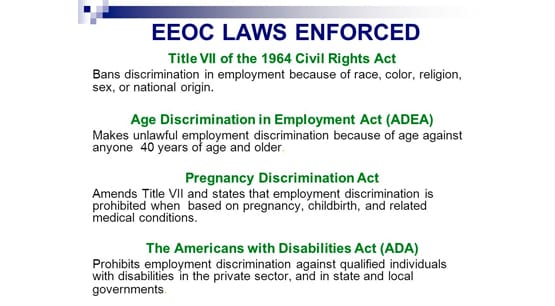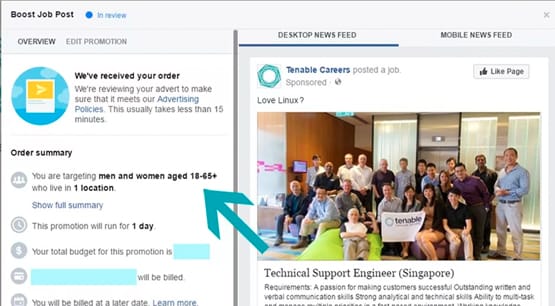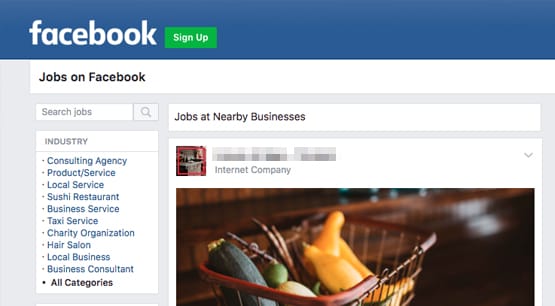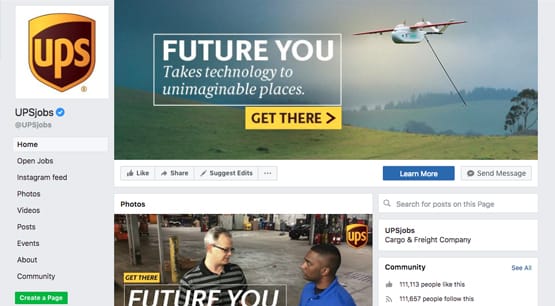How to Advertise a Job Listing Post on Facebook Ads

There are two ways you can advertise a job opening on Facebook. If you have a job opening, you can do a heck of a lot worse than advertising on a site that has two billion users, right? Of course, a huge portion of those users aren’t going to be qualified, either because of their geographic location or their skill set. That’s why Facebook’s ad targeting is excellent. The fact that you can narrow down your job ad to exclude people who aren’t qualified – and thus not have to pay to show it to them – is excellent.
Discrimination Laws
Before we begin, if you’re going to run an ad that advertises a job opening with your company, you need to comply with your nation’s anti-discrimination laws. In the United States, that means complying with the Equal Employment Opportunity Commission.
Specifically, it is illegal for an employer to “publish a job advertisement that shows preference for or discourages someone from applying for a job because of his or her race, color, religion, sex (include gender identity, sexual orientation, and pregnancy), national origin, age (40 or older), disability or genetic information.” You cannot discriminate against people because of aspects of who they are.
The law ahs not yet been truly challenged with regards to something like Facebook ads, at least not as far as I’m aware, but I would assume that you cannot discriminate based on your ad targeting. For example, if you run your job advertising ad and you limit your targeting to just white people, that’s blatant and indefensible racial discrimination. Be VERY careful when selecting your targeting options.
You are essentially limited to skill-based targeting, regional or geographic targeting, and other similar attributes. If you so much as touch racial or other demographic targeting, you might end up the target of a huge lawsuit.
For reference, these laws do not allow “but I didn’t know” or various “that’s just how it is” defenses. One example on the page listed above is “an employer’s reliance on word-of-mouth recruitment by its mostly Hispanic work force may violate the law if the result is that almost all new hires are Hispanic.” This is something the law takes seriously, and you do not want to run afoul of it.
Ideal Targeting
If you’re going to post a job ad, you want to pick the right kind of targeting to reach the right kinds of candidates.
As long as you stay away from the discriminatory targeting options, you have a lot of flexibility. Here are some recommended targeting options.
- Interests. If you’re a digital media company, you can target people with interests in companies like yourself, in products like your own, or with productions you’ve helped make. If you’re a coffee company, interests in coffee and eco-friendly perspectives can help, and so on.
- Education level. It’s not discriminatory to exclude people who don’t meet a minimum level of education for an advanced technical position. That said, there are plenty of famous examples of high school drop-outs who nevertheless became valuable assets for companies, so it might be wiser to keep this open.
- Location. If you’re a smaller local business, it doesn’t necessarily make sense to target people across the country with your ads. However, if you’re in need of a specific talent or skill set, it might be worthwhile to broadcast your ads nationally, while advertising the fact that you can pay to relocate an employee who proves themselves valuable enough.
You might think that employment status would be a good targeting factor, but it’s really not. Often times your best prospects already have jobs, they are simply looking for upwards mobility or better opportunities. Meanwhile, those unemployed might be unemployed for a wide variety of reasons, which may include family or illness matters, disability, or other issues that can skirt the law with discrimination.
Classic Job Ads
The “classic” method for posting a job ad on Facebook is simply to create a normal ad that points to a landing page on your website. The landing page in question is simply your job opportunity page, with your job description and your application process.
This is the older way of doing things, and while it’s still effective, it does mean you need to put in the work to create the job portal and run the ads properly.
You can also create a job listing on a site like Monster or Indeed, and then run ads to that specific job post, though I don’t recommend it. Instead, create a job portal on your site with links to job postings on whatever site you want to use, and advertise the careers page or individual job listing page.
It’s up to you how you want to handle applications. Some businesses prefer to funnel everyone through one specific portal, like a Taleo page. Others will just say “send your resume and information to this email address.” I actually like the Facebook method, though I haven’t personally used it since I primarily hire freelancers. Read more about it below.
Modern Job Ads
As of February 15 of 2017, Facebook has allowed job-focused ads as a special kind of posting on Facebook for business pages. Only business pages can utilize this kind of post, and it has some benefits above and beyond normal advertising.
Job opportunity posts are a special kind of post you can make organically on the Facebook platform. They appear on your business page, but they also appear elsewhere; specifically, the job boards.
The Facebook job boards default to geographic location availability, and allow potential applicants to choose their location, industry, and job type. Job posts are titled with your business page, along with your category and rating if a rating is available. Information about the job includes the type of job, the address of the location of work, a quick explanation of duties and requirements as with any job posting, and payment information. Most importantly, all jobs have an “apply now” button. When clicked, that button pops up a form that is pre-filled with information pulled from the user’s profile, allowing them to edit and adapt that information before sending it to you.
Critically, you can use Facebook as your job portal. When someone applies to your job, the information is sent to you via a message in your job portal. You can review their information directly and immediately, and can even reach out to the applicant via Facebook Messenger in order to schedule an interview or hire them on the spot. You can also ask them filtering questions about their skills and other non-discriminatory information.
You are able to boost a job post the same way you can boost any other organic post on Facebook. Find the post and click on the “boost post” button, and you will be able to implement your audience targeting, with limited targeting options due to anti-discrimination laws. Facebook straight-up does not allow you to implement age or gender targeting on boosted job posts. Once you save the information – and assuming you have payment information available – your ad will go live.
Writing a Better Job Post
If you want to get a better selection of applicants on Facebook, you need to write a better job post. Admittedly, a Facebook post isn’t the best place to put the full job requirements.
The first thing you need to do is recognize the difference between a job posting and a job description. A job posting is short and sweet, meant to attract users. It’s the kind of thing UPS posts about on their jobs page. The posts on that page are aimed at glorifying their career options, showcasing the kinds of people who fit in with their culture, and promoting the kinds of initiatives they push to advance their company. You’ll notice all of the posts they share are intended to make you feel better about their company, and very few of them talk about job requirements.
A job description is the kind of thing you’ll see on Indeed; a page that talks about the requirements for the job, the job responsibilities, the skills required to apply or be hired, and the minimum level of education required to apply. These are good and informative for an applicant, but they are very far from the short, punchy content that makes a good job ad.
Essentially, anything that could turn a user away should be left to the job description, while anything that glorifies the job and makes people think “this would be a good fit for me” is ideal for your job post.
Facebook has a few pieces of advice for using their job ads.
- Be thorough and easy to understand with your job description. Don’t go into detailed intricacies with your job responsibilities. Which is better: “manage a large-scale database system for a Fortune 500 company” or “manage a Windows server environment using Sonicwall Firewalls and HP servers, cover tickets with Zendesk, deal with employee technical issues, and address problems as they arise”?
- Provide any essential details about the job, such as the job title, the location, and anything else so employees can self-filter. If you want to require a Masters degree, state so. If you’re willing to help a potential employee relocate, say so.
- Fill in the specific job details in the available forms. These include the starting salary offer, the additional benefits like working from home, healthcare, and so on, and work hours. Keep everything as simple as possible, and keep in mind that applicants might want to negotiate.
- Use extra filtering questions if necessary. You can’t go all-in with a Taleo-style job application personality questionnaire, but you shouldn’t want to anyways. Those questionnaires are generally crap and just serve to see how many people have the patience to get through them.
Additionally, since your job applications come through Facebook and send a notification to your account, you can reply and address users immediately. You can say “thanks for your application, it’s under review and we’ll get back to you soon!” You can also scan a job application and choose to schedule an interview on the spot. You can bet job applicants will be excited when they get a response right away! Plus, as with any Messenger-enabled business page, you get a response timeliness rating publicly visible on your profile.
Creating a Post
If you want to make a job post, click here. This will take you to a special publication window with information for you to choose. You can select which page you’re publishing, and you can choose to either use your cover photo or upload a job-specific photo, which I recommend. You can then fill out the boxes with the job title, the location, the salary either per hour or per day/week/month/year. You can choose the job type, from full time to part time, internships, volunteer positions, or contract positions. You have 5,000 characters for your job description, and then you can add additional questions.
Additional questions can be free text questions, yes/no questions, or multiple choice questions. You can add up to three of these questions, and each one of them has up to 200 characters for the question and 40 characters for each multiple choice answer, if necessary.
Once your post is ready to go, simply confirm it in the preview pane and submit it. It will become a post on your business page, a post on the job boards, and an organic post in the news feed of your followers. You can then navigate to your business page and choose “boost post” for the post, to implement the ad system and pay for additional promotion.









